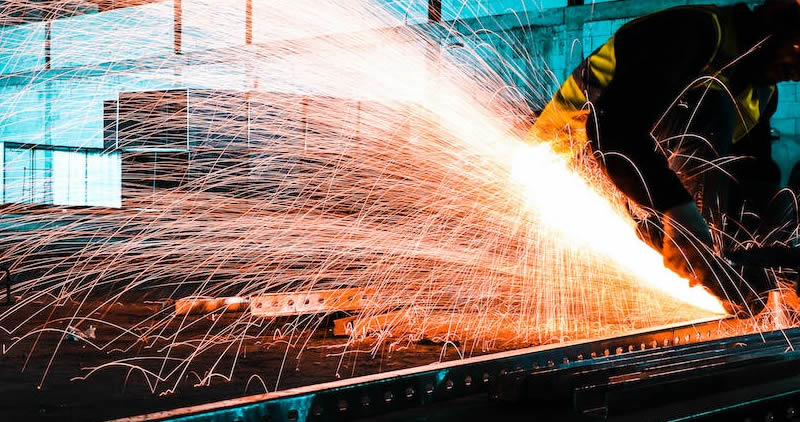The world of industrial manufacturing is buzzing with constant innovations, and when it comes to cutting technology, choosing between router cutting vs. laser cutting can often leave manufacturers in a quandary. Understanding these two powerful methods is crucial as they both bring unique benefits to the table.
In the realm of modern industrial applications, the decision to invest in router cutting or laser cutting hinges significantly on specific needs, materials to be cut, and the level of precision required. These methods are revolutionary in their ways, with each having its place in the production line. Let’s explore their aspects to unpack what each can offer and guide manufacturers in making informed choices.

Understanding Router Cutting
What is Router Cutting?
Router cutting uses powerful rotating tools to carve or shape materials, predominantly wood, plastics, and certain metals. It’s a method synonymous with versatility and detail, capable of delivering excellent material finish and structural integrity.
Materials Suitable for Router Cutting
Typically employed for cutting softer materials such as wood, acrylics, and composites, router cutting is an excellent choice for intricate designs and applications requiring softer touch.
The Intricacies of Laser Cutting
What is Laser Cutting?
Laser cutting employs concentrated laser beams to melt, burn, or vaporize materials, offering unparalleled precision and speed. It’s celebrated for cutting complex parts and designs, especially when working with tougher materials.
Materials Suitable for Laser Cutting
Laser cutting is versatile across numerous materials, including metals, plastics, glass, and even fabrics. Its high precision makes it ideally suited for industries requiring detailed and precise parts.
Comparing the Efficiency
Which Method is Faster?
Laser cutting is generally faster due to its concentrated beam that swiftly cuts through materials, making it more efficient for high-volume runs.
Cost Considerations
The initial investment and operational costs of laser cutting can be higher compared to router cutting, making the latter more economically viable for smaller operations or niches focusing on softer materials.
Precision and Finishing
What Offers Better Precision?
Undoubtedly, laser cutting takes the lead in precision, outperforming routers in creating intricate and delicate cuts with minimal edge disruption.
Surface Finish Impact
While both methods produce excellent finishes, the post-processing required for router-cut materials might be higher, especially for harder materials.
Safety and Environmental Concerns
Safety Measures
Both cutting methods necessitate stringent safety protocols, though laser cutting involves handling concentrated light beams, requiring additional training and protective gear. For more insights, visit metal cutting safety.
Environmental Impact
The environmental footprint of laser cutting can be significant due to energy consumption and potential emissions, which might require additional controls like filtration systems.
Application Areas
When to Choose Router Cutting?
Router cutting is ideal for industries working with softer, more malleable materials and where a hands-on approach is preferred for creative detailing, making it a staple in carpentry and artisan craft manufacturing.
When to Opt for Laser Cutting?
Industries requiring high precision, such as aerospace, automotive parts, and electronics, often gravitate towards laser cutting due to its superior accuracy and faster throughput.
Technological Advancements
The Future of Router Cutting
With advancements in CNC technology, router cutting machines are becoming increasingly automated, reducing labor and increasing precision. More information can be found at precision cutting design.
Laser Technology Advancements
Continual improvements in laser technology are enhancing cutting speed, precision, and reducing costs, making laser machines more accessible to a variety of industries.
User Considerations
Which is Easier to Operate?
While both systems require a level of technical expertise, router cutting machines are often seen as more user-friendly, especially for beginners.
Maintenance Needs
Laser cutting machines typically require more maintenance and careful calibration to maintain precision, while router machines may need regular tool changes and checks for wear and tear.
Innovative Cutting Techniques
Integrating CAD with Cutting Methods
Both router cutting and laser cutting benefit from CAD integration, allowing for enhanced design flexibility and accuracy in manufacturing processes. Explore this concept at CAD design integration.
Hybrid Cutting Solutions
For businesses requiring the best of both worlds, hybrid cutting technologies are emerging, combining the strengths of both router and laser cutting capabilities.
Conclusion
In conclusion, choosing between router cutting vs. laser cutting demands careful consideration of material types, precision requirements, and costs. While router cutting offers an economical and versatile option for softer materials, laser cutting provides unparalleled accuracy and speed for complex and harder materials. For [further exploration](https://www.samaterials.com/top-5-methods-for-effective-metal-cutting.html), its important to align your choice with the specific needs of your projects and the future growth plans.

FAQ Section
Which is more cost-effective?
For smaller projects or softer materials, router cutting can be more cost-effective. However, for high precision and complex cuts, investing in laser cutting could be more beneficial in the long run.
Can both methods be automated?
Yes, automation is a growing trend in both areas. CNC technology increasingly supports router cutting, while advancements continue to streamline the automation in laser cutting.
Which method is safer?
When proper safety protocols are followed, both methods are safe. However, laser cutting requires extra precautions due to high-energy beams used in the cutting process.
This article contains affiliate links. We may earn a commission at no extra cost to you.

